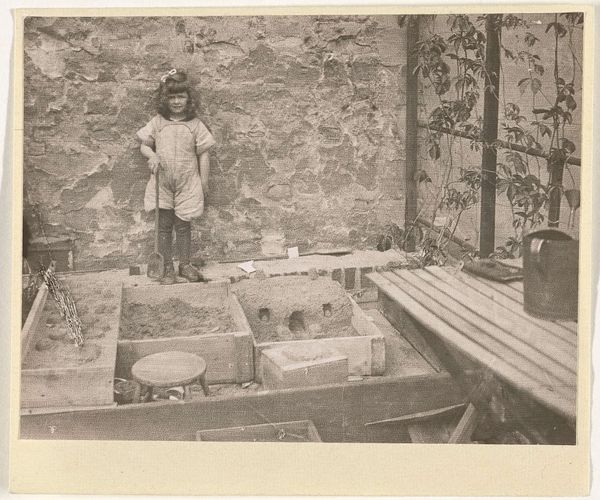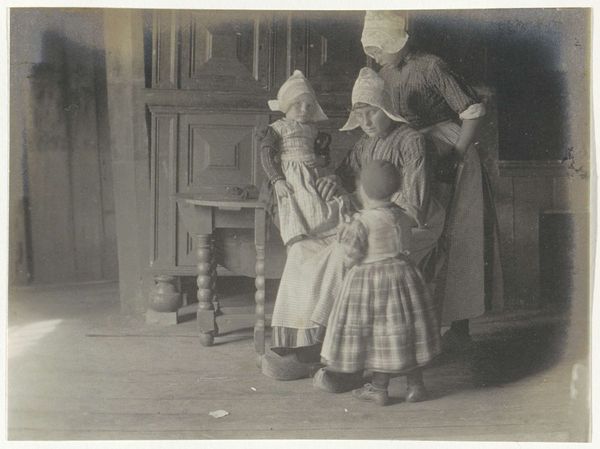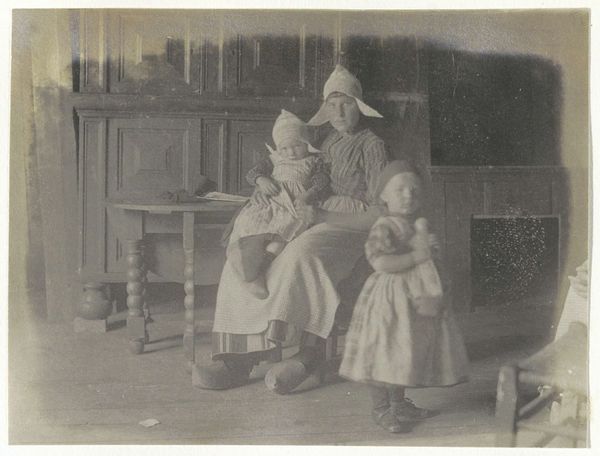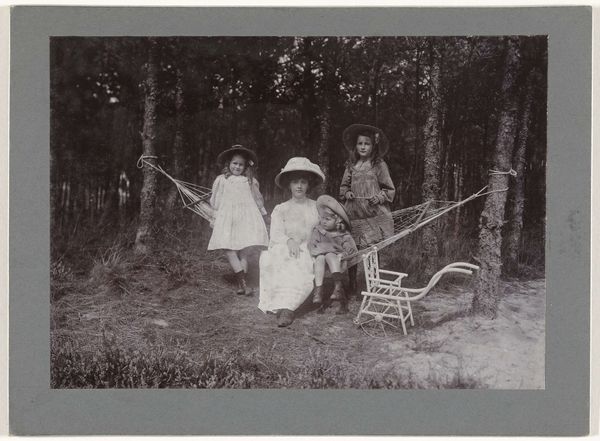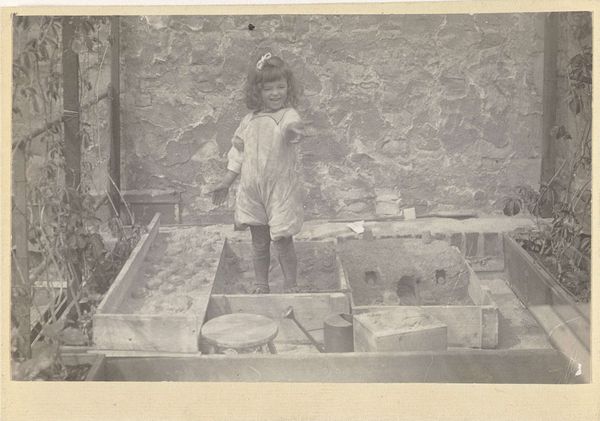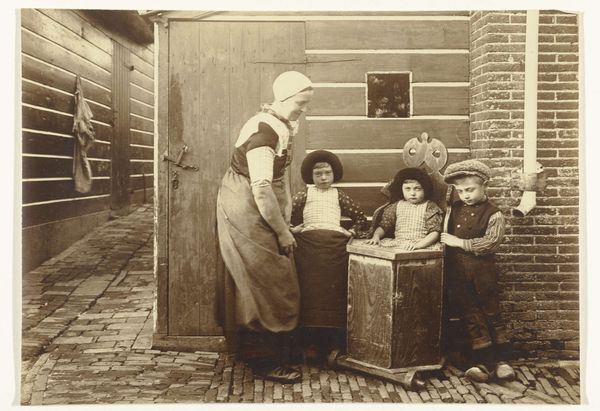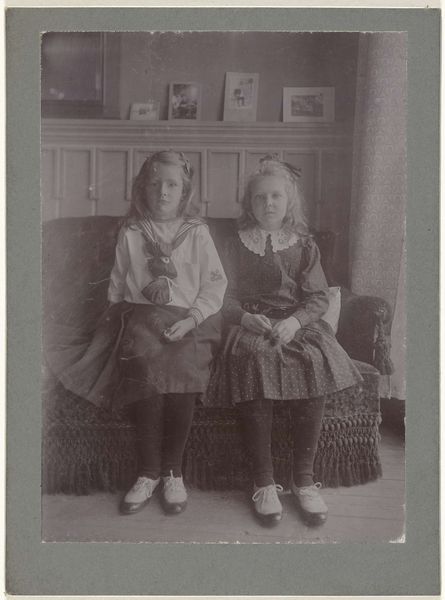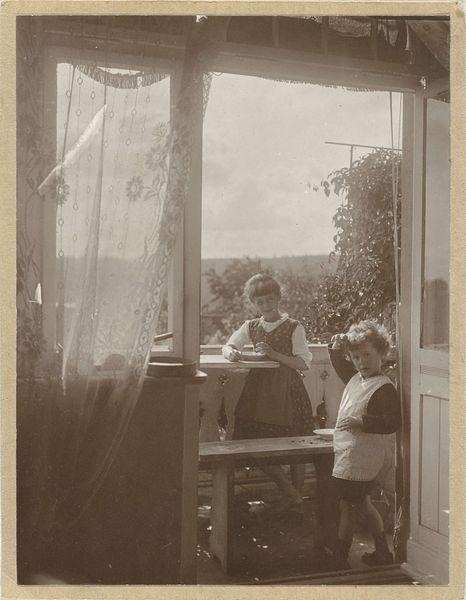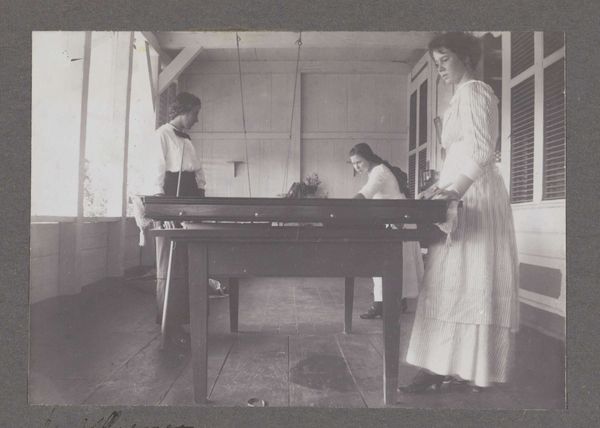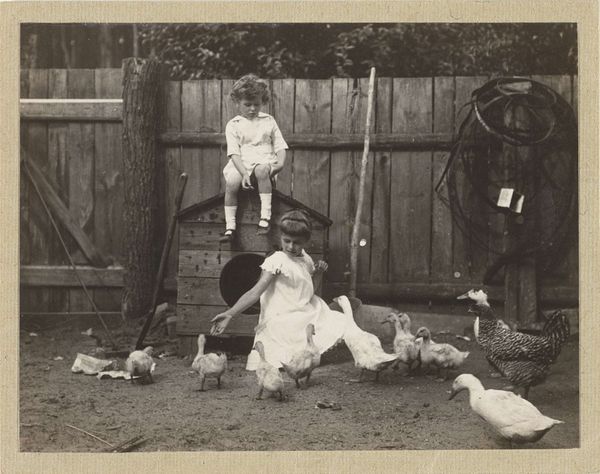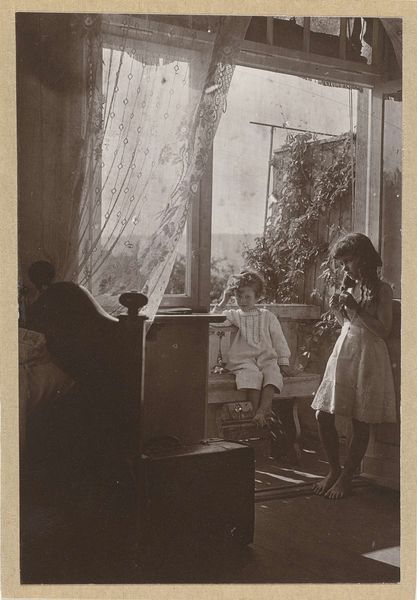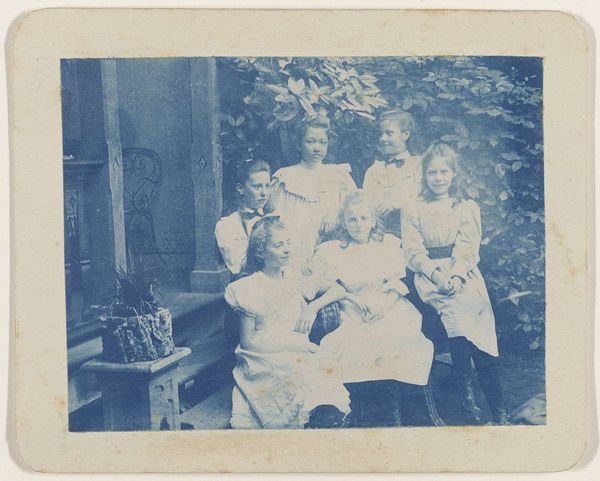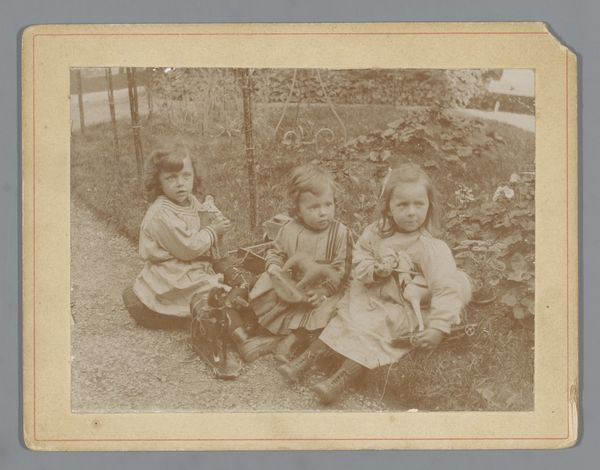
Marba en Eckart Titzenthaler, kinderen van de fotograaf, en een onbekend meisje op het dakterras van het woonhuis in de Friedrichstrasse, Berlijn 1916 - 1917
0:00
0:00
Dimensions: height 71 mm, width 85 mm
Copyright: Rijks Museum: Open Domain
Curator: The piece before us, taken between 1916 and 1917, is by Waldemar Titzenthaler and captures "Marba en Eckart Titzenthaler, kinderen van de fotograaf, en een onbekend meisje op het dakterras van het woonhuis in de Friedrichstrasse, Berlijn." A beautiful mouthful, isn't it? Editor: It's striking. There's an immediate feeling of stillness and a slightly unsettling innocence about the subjects; their poses are stiff but also poignant against what looks like a worn brick wall. Curator: Notice how Titzenthaler renders his subjects. Although created using photographic techniques, it bears some hallmarks of German Expressionism with its candid emotional conveyance. How do you see this photograph as reflecting its historical moment? Editor: The children's placement is key, they look almost stranded against a backdrop. This invokes ideas about identity and vulnerability. Their eyes seem to be holding unacknowledged fears, or perhaps the loss of childhood freedoms as the world descended into war. Curator: That is compelling! The children’s clothing, embroidered and adorned, juxtaposed against the simple setting adds to a depth that makes us feel there are symbols there that may elude us now, yet are not unreachable. Editor: It’s the power of clothing, yes? In a photograph like this, dress serves as cultural identity. During wartime, visual signals become amplified. Curator: Do you think the viewer then, perhaps those looking at it currently, are also invited to contemplate themes of preservation, remembrance, or resilience embedded in the photograph's narrative? Editor: I believe so. Looking at their solemn gazes reminds me that these are not merely images but records of survival through turbulent times; family archives turned to symbols of perseverance and enduring connection during political division. Curator: Your insights have indeed highlighted profound meanings layered within a deceptively simple scene of children in, we must remember, wartorn Berlin! I appreciate you unraveling its implications so elegantly for our visitors. Editor: Thank you! It’s just important for people today also recognize they bear meanings relevant even to our rapidly evolving socio-political conditions, a warning but equally, and more importantly, an ongoing demonstration of humanity’s resilience, really.
Comments
No comments
Be the first to comment and join the conversation on the ultimate creative platform.
